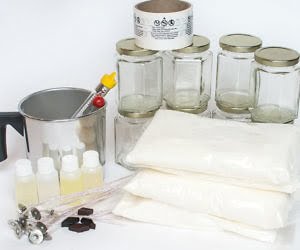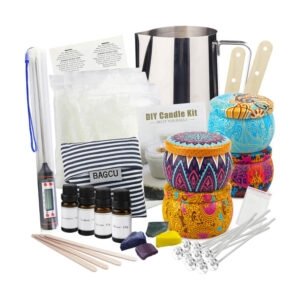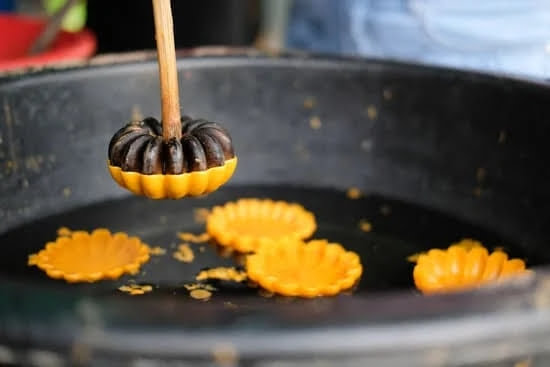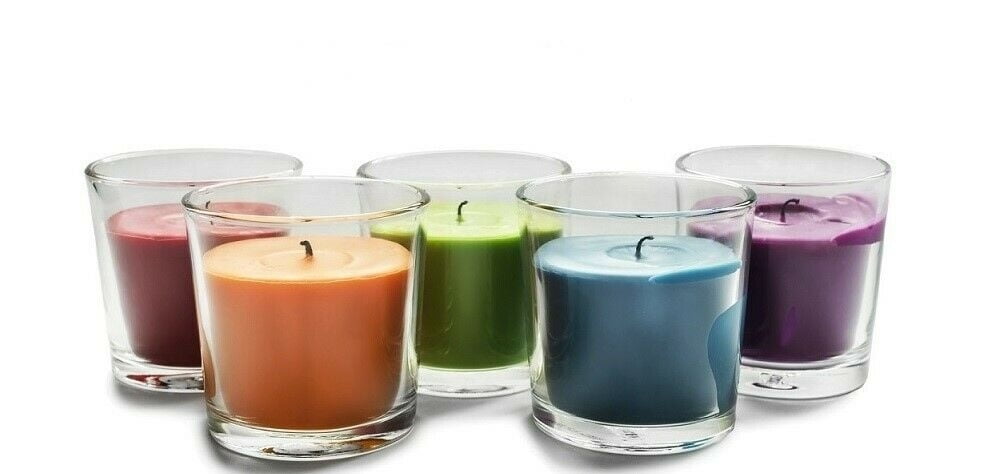Candle making is an art that dates back centuries and holds a special place in our hearts and homes. From creating a warm ambiance to filling the air with delightful scents, candles have become an essential part of our lives.
However, few may know that one crucial component plays a significant role in the overall performance of a candle – the wick. In this article, we delve into the fascinating world of candle wicks and explore their importance in achieving the perfect burn.
To truly understand the significance of choosing the right wick color for your candles, it’s essential to grasp the purpose behind a wick. The primary function of a wick is to draw up the liquid wax towards its tip and create a controlled flame when lit. But did you know that even something as seemingly insignificant as the color of a wick can influence this process?
In this first section, we not only unveil how different wick colors are used in candle making but also explore their effect on various aspects of burning characteristics. By understanding the science behind selecting the right color for your candle wicks, you can enhance both its aesthetic appeal and overall performance. So let’s dive into this colorful journey through candle making.
What Colors are Used for Making Candle Wicks?
Exploring the various colors commonly used in candle wicks
When it comes to making candle wicks, a wide range of colors are available for candle makers to choose from. The color of the wick plays an important role in the overall aesthetics and burning characteristics of the candle. Traditionally, white and natural-colored wicks have been widely used. However, with advancements in technology and changing trends, colored wicks have gained popularity as well.
White and natural-colored wicks are classic choices that provide a clean and neutral look to candles. They are versatile and complement a variety of candle designs and colors. White wicks are often preferred for scented candles or those where the wax color is light or transparent as they blend seamlessly with different aromas and hues. Natural-colored wicks, on the other hand, add an organic touch to candles and are often used in rustic or eco-friendly candle designs.
In addition to white and natural options, colored wicks have become increasingly popular in recent years. Candle makers now have access to an extensive range of vibrant colors including red, blue, green, purple, yellow, and more. These colored wicks can transform regular candles into eye-catching centerpieces or decorative elements that suit specific themes or occasions such as birthdays or holidays. Candle makers can choose a color that complements or contrasts with the wax color for added visual impact.
Highlighting the reasons behind choosing specific colors
The choice of colors for making candle wicks is not simply based on personal preference but also on factors such as symbolism, cultural significance, purpose of the candle, and even scientific considerations. Different colors evoke various emotions and convey distinct meanings.
For example, white candle wicks symbolize purity, peace, spirituality, and innocence. They are commonly used in religious ceremonies or meditation practices to create a serene atmosphere. On the other hand, black candle wicks are associated with elegance, mystery, and sophistication. They are often used in luxury or decorative candles to create a dramatic effect.
Certain colors also hold cultural significance. For instance, in many Asian cultures, red is considered auspicious and brings good luck, so red wicks are used in celebratory candles for occasions like weddings or festivals. Green wicks may be used in candles associated with nature or environmental causes to symbolize growth, harmony, and sustainability.
In addition to symbolism and cultural aspects, the choice of wick color can be influenced by the specific purpose of the candle. For scented candles, a neutral-colored wick such as white or natural is often preferred to avoid any interference with the fragrance. For birthday candles or celebration candles, bright and vibrant colors like yellow or pink can add a festive touch.
Overall, the selection of wick color should be thoughtfully done based on its intended impression on the candle’s appearance and meaning. Whether it’s a classic white wick for simplicity or a bold colored wick for vibrancy, candle makers have numerous options to choose from based on their creative vision and desired impact.
The Science Behind Choosing the Right Wick Color
When it comes to candle making, the color of a wick may seem like a small detail, but it can actually have a significant impact on the burning process and the overall performance of the candle. The choice of wick color is not merely for aesthetic purposes; it is rooted in science and understanding how different colors affect flame characteristics.
Different wick colors can influence factors such as burn rate, stability, and even the amount of smoke produced during burning. For example, darker colored wicks tend to absorb more heat from the flame, resulting in a faster burn rate and potentially creating a larger flame. On the other hand, lighter colored wicks reflect more heat and have a slower burn rate.
The choice of wick color also affects the stability of the flame. Darker colored wicks tend to create taller flames with more movement, while lighter colored wicks produce shorter and steadier flames. This is important because an unstable flame can lead to uneven melting of wax or excessive soot buildup on the container or surrounding surfaces.
Furthermore, wick color can impact the amount of smoke emitted during burning. Darker colored wicks have been found to produce more visible soot than lighter colored ones. Excessive soot not only affects air quality but can also leave unsightly marks on walls or ceilings if used in enclosed spaces.
| Wick Color | Burn Rate | Flame Stability | Soot Production |
|---|---|---|---|
| White | Slow | Steady | Low |
| Black | Fast | Tall and flickering | High |
| Colored (varies) | Medium | Varies based on color pigment | Varies based on color pigment |
It is important to note that the specific characteristics of a wick color can vary depending on other factors such as the type of wax, fragrance, or additional additives used in the candle. Therefore, it is recommended to conduct small-scale experiments or consult with experienced candle makers to determine the most suitable wick color for your specific candle projects.
White Candle Wicks
White candle wicks have long been the go-to choice for many candle makers due to their symbolic significance and versatility. When it comes to creating candles, the color of the wick can play a significant role in enhancing the overall aesthetic appeal and conveying specific meanings.
The popularity of white candle wicks stems from their ability to blend seamlessly with various candle colors and designs. Their neutral tone allows them to complement any type of wax, whether it be natural or colored. This versatility makes them a preferred choice for both novice and experienced candle makers alike. White wicks are also commonly used in scented candles, allowing the fragrance to take center stage without any interference from the wick’s color.
Symbolically, white candles represent purity, spirituality, and new beginnings. In many cultures and spiritual practices, white is associated with enlightenment, clarity, and positive energy. Lighting a white candle can serve as a symbol of purification or as an offering during religious ceremonies. This symbolism adds an element of depth and meaning to candles crafted with white wicks.
In addition to their symbolic significance, white candle wicks also offer practical benefits. They tend to have excellent stability and consistent burning characteristics, making them reliable choices for different types of candles. The uniform color of white wicks also allows for easy monitoring of the flame’s behavior during burning.
Overall, white candle wicks continue to be popular among candle makers due to their versatility in design and their symbolic associations with purity and spirituality. Whether you are crafting scented candles or exploring creative designs with colored wax, a white wick can be the perfect choice to enhance your candle-making endeavors.
| Benefits | Characteristics |
|---|---|
| Versatile | Complements various candle colors |
| Symbolic | Represents purity, spirituality, and new beginnings |
| Practical | Stable and consistent burning characteristics |
Black Candle Wicks
Black candle wicks have gained significant popularity in recent years due to their bold, elegant, and mysterious appearance. These wicks are commonly used in specific types of candles that aim to create a unique ambiance or convey a particular meaning. One such example is the use of black wicks in gothic-themed or Halloween candles, where the dark and enigmatic nature of black adds to the overall aesthetic appeal.
One of the key reasons behind the use of black candle wicks is their ability to create a visually striking contrast against lighter-colored candle wax. This contrast can enhance the overall elegance and sophistication of a candle’s design. When combined with fragrant essential oils or colored wax, black wicks can contribute to creating a captivating sensory experience for candle enthusiasts.
Moreover, black candle wicks hold symbolic significance in various cultural practices and spiritual rituals. In some traditions, black is associated with protection, banishing negative energies, and channeling inner strength. Burning candles with black colored wicks during meditation or certain ceremonies can aid in focusing intentions and promoting introspection.
Colored Candle Wicks
When it comes to candle making, colored wicks can add a whole new level of vibrancy and creativity to your candles. While the primary purpose of a candle wick is to provide a channel for fuel to travel from the wax pool to the flame, the color of the wick can also enhance the visual appeal of the final product.
Today, candle makers have access to a diverse range of colors for their wicks. From vibrant reds and blues to soft pastels and even metallic shades, there are endless options to choose from. The use of colored wicks allows for customization and personalization, allowing each candle maker to let their creativity shine.
One benefit of colored wicks is that they can complement or contrast with the color of the wax. For example, using a white or cream-colored wick in a brightly colored wax can create an elegant look, while using a bold-colored wick in a neutral-colored wax can make a statement.
Colored wicks can also be used strategically to convey specific moods or themes. For instance, using warm-colored wicks like yellows and oranges in autumn-themed candles can evoke a cozy and inviting atmosphere.
In addition to aesthetics, colored wicks can also serve as markers for different scents or purposes. Some candle makers choose to coordinate the color of the wick with the fragrance or intended use of the candle. For instance, blue wicks might be used for calming lavender-scented candles, while green wicks might be used for refreshing citrus-scented candles. This not only adds visual interest but also helps consumers easily identify particular scents or purposes when choosing their candles.
Overall, colored candle wicks offer an opportunity for creative expression in candle making. Whether you’re looking to add brightness and fun to your candles or create a harmonious and coordinated aesthetic, colored wicks can help you achieve your desired look.
Just remember to consider the color of your wax, the mood or theme you want to convey, and the purpose of your candle when choosing the perfect colored wick. With the wide range of options available, the possibilities for creativity and personalization are endless.
Natural and Plant-Based Wick Colors
In recent years, there has been a growing demand for eco-friendly products, including candles. As more people become conscious of their environmental impact, candle makers are responding by offering wicks made from natural and plant-based materials. These wicks not only provide a sustainable alternative but also come in a variety of colors that can enhance the overall aesthetic appeal of candles.
One popular option for natural wick colors is hemp. Hemp wicks have gained popularity due to their eco-friendly nature and their ability to produce a clean and consistent burn. Hemp fibers are naturally brown in color, which gives the candle an earthy and rustic look. This works particularly well for candles with natural themes or those intended for outdoor use.
Another natural and plant-based option is cotton wicks that have been left unbleached. Bleaching agents used in traditional cotton wick production can release harmful chemicals into the air when burned. By using unbleached cotton wicks, candle makers reduce the potential for toxins being released while still maintaining the natural off-white color of the cotton fiber. This color choice is perfect for candles with a minimalist design or those that aim to create a calm and serene atmosphere.
For candle makers who want to add more vibrancy to their creations while staying eco-conscious, beetroot extract is becoming an increasingly popular choice as a plant-based dye for wicks. Beetroot extract gives the wick a beautiful deep red color while adding no additional chemicals or toxins into the candle’s composition. This makes it an attractive option for those looking to create bold statement pieces or themed candles for special occasions.
By embracing natural and plant-based wick colors, candle makers can align their craft with sustainable practices without compromising on aesthetics or functionality. These eco-friendly options not only cater to environmentally conscious consumers but also offer unique choices that allow candle makers to explore new creative possibilities. So next time you embark on a candle-making project, consider incorporating natural and plant-based wick colors to enhance the beauty of your candles while preserving the planet.
Specific Colors for Different Candle Types
When it comes to candle making, the choice of wick color can greatly impact the overall aesthetic appeal and symbolism of the finished product. Different candle types often call for specific colors to enhance their purpose and visual effect. Here are some preferred wick color choices for different candle types and the reasons behind these selections:
- Scented Candles: Scented candles are known for their ability to create a relaxing and soothing ambiance. To complement their calming nature, many scented candles use white or off-white wicks. These colors not only blend well with various candle dyes but also give a clean and elegant look to the candle, allowing the focus to be on the fragrance rather than the wick color.
- Birthday Candles: Birthday candles are often vibrant and fun, symbolizing celebration and joyous occasions. For these candles, colors like red, blue, yellow, or pink are commonly used for the wicks. The vibrant colors of these wicks add an element of excitement and playfulness to the overall experience of blowing out birthday candles.
- Meditation Candles: Meditation candles are designed to create a serene atmosphere that aids in relaxation and mindfulness practices. When it comes to choosing wick colors for meditation candles, natural or earthy tones such as beige or light brown are popular options. These subtle hues promote a sense of peace and tranquility during meditation sessions.
- Seasonal Candles: Seasonal candles celebrate different holidays and seasons throughout the year. For example, green wicks are commonly used in Christmas-themed candles, representing evergreen trees and holiday cheer. Orange or pumpkin-colored wicks are popular choices for Halloween candles, capturing the essence of autumn.
- Aromatherapy Candles: Aromatherapy candles serve specific purposes by combining fragrances with essential oils to promote various moods or therapeutic effects. Depending on the desired outcome, different wick colors are often used. For example, blue wicks can be chosen for relaxation and stress relief, while pink or purple wicks may be preferred for promoting a sense of love and tranquility.
The selection of specific wick colors for different candle types is not only based on aesthetics but also on the intended purpose and symbolism associated with each candle. By carefully considering the color of the wick, candle makers can enhance the overall experience and create candles that align with their desired themes or intentions.
Conclusion
In conclusion, the color of the wick used in candle making plays a significant role in both the aesthetic appeal and functionality of the final product. While white candle wicks are widely popular for their versatility and symbolic meaning, black wicks add an air of boldness, elegance, and mystery to specific candle types.
Colored wicks offer a range of vibrant options that can enhance the visual appeal of candles, while natural and plant-based wick colors cater to the growing demand for eco-friendly alternatives.
When selecting the perfect wick color for your candle crafts, it is important to consider not only the desired aesthetic but also the purpose of your candles. Different candle types may benefit from specific colors that align with their intended use or symbolism. For scented candles, birthday candles, or meditation candles, it is crucial to analyze the preferred colors and understand their significance in relation to the candles’ purpose.
To ensure success in your candle projects, take into account factors such as burn time, flame characteristics, and overall functionality when choosing the right wick color. Experimenting with different combinations and understanding how each color affects burning processes will allow you to create personalized and visually appealing candles that meet your specific needs.
Whether you opt for traditional white or explore bolder choices like black or colored wicks, remember that choosing the perfect wick color is a creative process that allows you to infuse personality and style into your candle crafts. With careful consideration given to both aesthetics and functionality, you can create stunning candles that bring joy and beauty into any space.
Frequently Asked Questions
What kind of dye is used in candle making?
The kind of dye used in candle making can vary depending on the desired outcome. There are different types of dyes available, including liquid, powder, and chip dyes. Liquid dyes are commonly used as they dissolve easily and provide a consistent color throughout the candle.
Powder dyes can be mixed with wax to create unique colors and effects. Chip dyes are small chips or blocks of colored wax that can be melted along with the base wax to add color to the candle. Whatever type of dye is chosen, it is important to use dyes specifically designed for candle making to ensure safe and proper results.
What material is used for candle wicks?
The material commonly used for candle wicks is cotton. Cotton wicks are preferred due to their ability to burn cleanly and evenly, providing a steady flame throughout the life of the candle.
They are also known for their excellent absorbency, which helps in absorbing the liquid wax and feeding it to the flame. Choosing the right size and thickness of cotton wick depends on factors such as the diameter of the candle container or mold, type of wax being used, desired burn rate, and fragrance load.
How do you make a homemade candle wick?
Making a homemade candle wick requires a few simple steps. First, select a suitable material that will serve as the core of your homemade wick; options include cotton string or twine, hemp rope, or even strips of paper towel rolled tightly into wick shapes. Next, prepare the wick by soaking it in a solution made from equal parts water and borax (or another salt substitute), allowing it to soak for at least 12 hours before drying completely.
This process helps make the wick more resistant to burning too quickly while also promoting better combustion during use. Once dry, you can dip your homemade wick in melted wax several times until it becomes stiff enough for use in your candles.

Welcome to my candle making blog! In this blog, I will be sharing my tips and tricks for making candles. I will also be sharing some of my favorite recipes.





